Quick Takeaways
- Massage dates back over 5,000years, originating in ancient Egypt, China, and India.
- Greek and Roman cultures turned massage into a medical art, linking it to the humoral theory.
- The Middle Ages shifted focus to religious healing, while the Renaissance revived scientific study.
- Modern styles-Swedish, Shiatsu, Thai, sports-grow from these historic roots and adapt to today’s wellness market.
- Understanding the past helps you choose techniques that match your body’s needs.
What is Body Massage?
When we talk about body massage is a hands‑on therapy that manipulates muscles and soft tissue to promote relaxation, circulation, and overall well‑being, we’re dealing with a practice that’s as old as civilization itself. From royal courts to street side stalls, massage has been used to heal, to celebrate, and even to seduce. Knowing where it started gives you a deeper appreciation for what you feel under the therapist’s hands today.
Ancient Beginnings
The earliest records come from Ancient Egypt around 2500BCE, where tomb paintings show workers rubbing elite bodies after long journeys. Egyptian healers believed massage could balance the “ka” - the life force - and stave off disease.
At the same time, Chinese Medicine documented “anmo” (press‑and‑rub) techniques in the Huangdi Neijing. The text linked massage to the flow of “qi” through meridians, a concept still alive in modern Shiatsu.
Moving west, the Ayurvedic Tradition of India described “abhyanga” - a warm oil massage meant to balance the three doshas. Ayurvedic manuals detail specific strokes for each body zone, a practice still taught in yoga studios.
Greek and Roman Formalization
Greek physicians like Hippocrates (c.460‑370BCE) wrote about “rubbing the muscles” to treat injuries, integrating massage into the humoral theory of health. The Greeks introduced systematic training for practitioners, a model later adopted by Rome.
In Roman Bathhouses, massage was part of the “thermae” routine. Slaves and professional masseurs used oils and tools to relax patrons after sauna-like sessions. Archaeologists have recovered bronze massage rollers, confirming the hands‑on tradition was a staple of urban life.
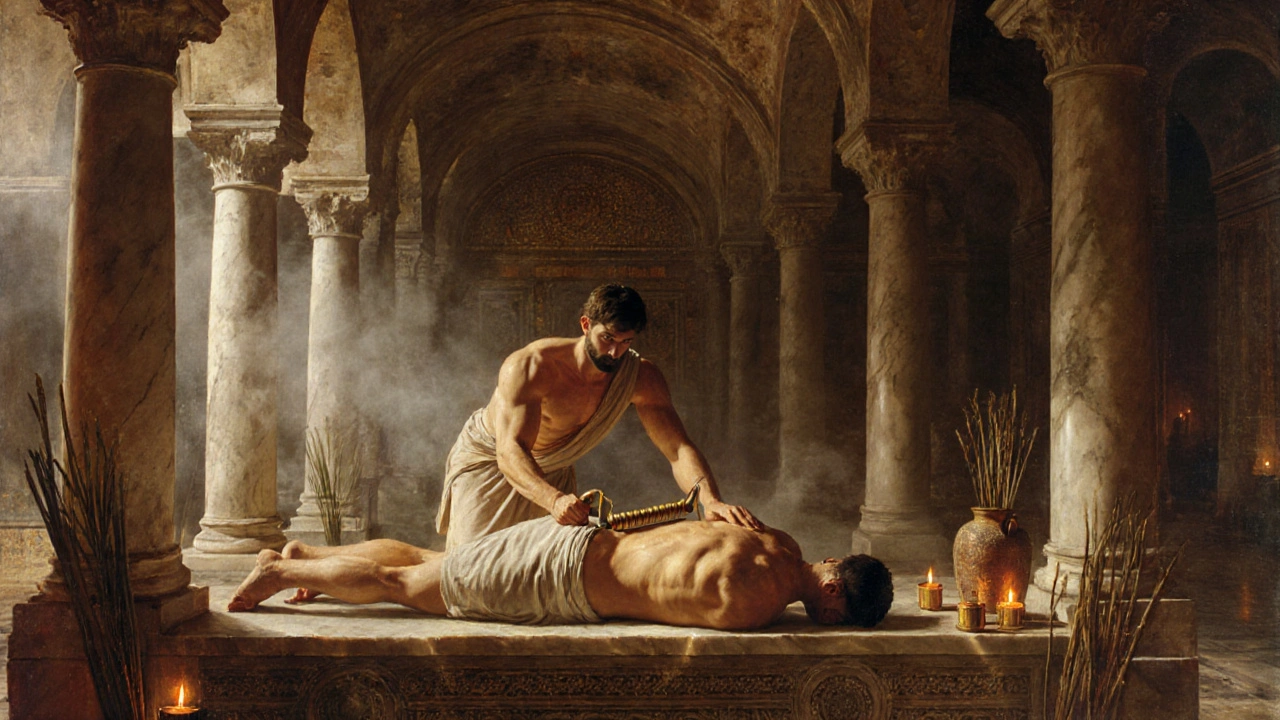
Middle Ages to Renaissance: Healing and Revival
During the medieval era, European monasteries preserved Greek texts, but massage fell under the umbrella of “holy hands.” Monks offered therapeutic rubs as a form of spiritual comfort, often accompanied by prayer.
The Renaissance ignited scientific curiosity again. Italian physician Andrea Vesalius dissected bodies to understand muscle anatomy, laying groundwork for more precise techniques. By the 18thcentury, French military surgeons used “percussion” and kneading to keep soldiers fit, hinting at modern sports massage.
Modern Foundations (19th-20thCentury)
Swedish pioneer Per Henrik Ling created the first systematic curriculum in the 1800s, combining strokes, joint mobilization, and breathing. His approach, known today as Swedish massage, remains the most taught style in Western schools.
In Japan, the early 20thcentury saw the rise of Shiatsu, which blends Chinese meridian theory with Japanese palpation. Meanwhile, Thai monks refined “Thai yoga massage,” using assisted stretching and rhythmic pressure.
Post‑World WarII America embraced massage as a wellness trend. The 1970s counterculture linked it to “New Age” healing, and the 1990s fitness boom introduced “sports massage” for athletes seeking faster recovery.
Today's Landscape
The spa industry now blends ancient rituals with high‑tech amenities: infrared saunas, aromatherapy diffusers, and even AI‑guided pressure mapping. Wellness tourism packages often include traditional Thai or Ayurvedic massages as cultural experiences, proving that historic techniques still sell.
In cities like Istanbul, you’ll find a mix of Ottoman hammam rituals, modern Swedish clinics, and boutique studios offering bespoke blends. The city’s geographic crossroads make it a living museum of massage evolution.
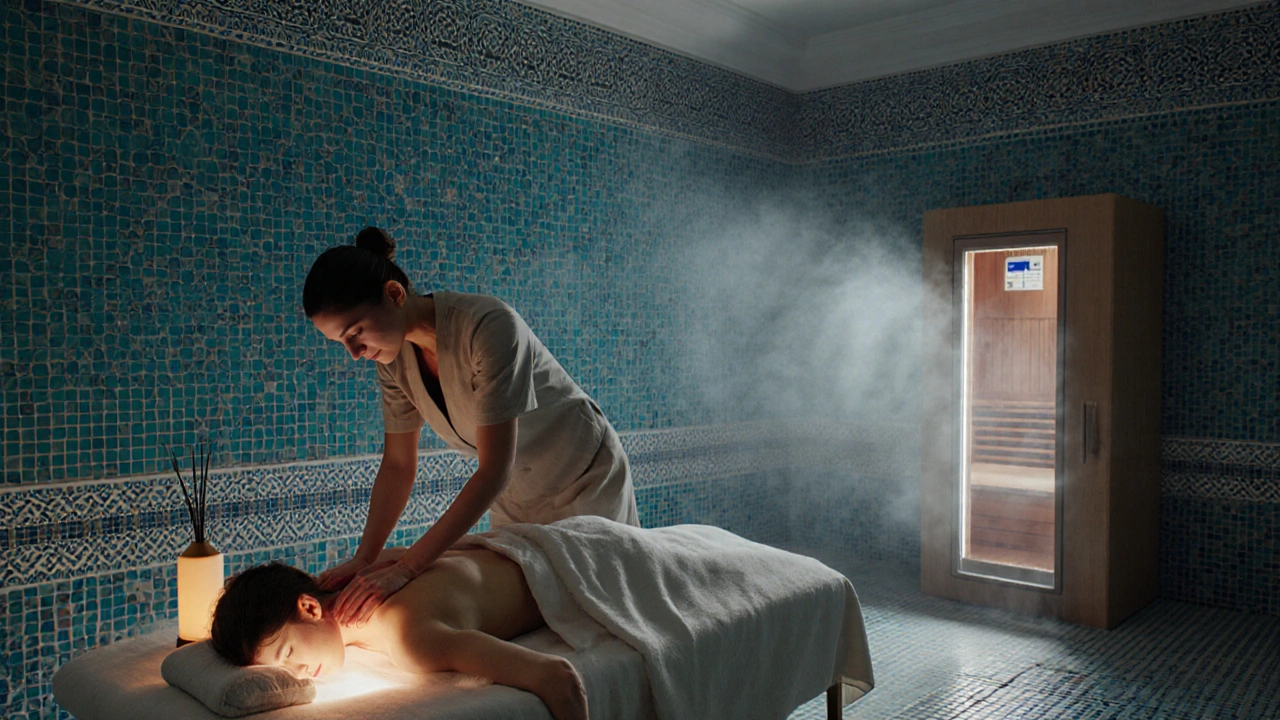
Comparing Key Eras
| Era | Primary Focus | Typical Techniques | Social Setting |
|---|---|---|---|
| Ancient (Egypt, China, India) | Balancing life force / energy | Oil rubs, meridian pressure, rhythmic strokes | Royal courts, temples, healers |
| Medieval (Europe) | Spiritual comfort & basic injury care | Gentle kneading, prayer‑hand rubs | Monasteries, pilgrim inns |
| Modern (19thcentury‑present) | Scientific health, relaxation, performance | Swedish long strokes, sports deep‑tissue, Shiatsu meridian | Spas, clinics, gyms, wellness retreats |
What the Past Means for You Today
Knowing the lineage helps you pick a style that fits your goal. Want to unwind after a stressful week? Swedish or aromatherapy‑infused sessions draw from 19th‑century relaxation science. Need to recover from a marathon? Sports or deep‑tissue methods trace back to military injury care.
If you’re curious about cultural immersion, trying a Thai or Ayurvedic massage connects you with centuries‑old traditions that still hold spiritual significance.
FAQs
When did the first recorded massage take place?
Archaeologists date the earliest known massage to around 2500BCE in Ancient Egypt, where wall paintings show workers massaging the body of a deceased noble.
How did Greek medicine influence modern massage?
Greek physicians like Hippocrates incorporated massage into the humoral theory, treating imbalances with targeted rubbing. Their emphasis on systematic training set the foundation for later curricula such as Ling’s Swedish method.
What’s the difference between ShiShi and Swedish massage?
Shiatsu focuses on pressure points along Chinese meridians to unblock qi, using finger pressure and thumb kneading. Swedish relies on long, gliding strokes, kneading, and tapotement to improve circulation and muscle relaxation. Both aim for wellness but stem from different philosophical roots.
Are ancient massage techniques safe today?
Most ancient strokes are gentle oil rubs or rhythmic tapping, which are low‑risk. Modern practitioners adapt them with hygiene standards and client‑specific adjustments, making them safe for most healthy adults.
How has technology changed massage therapy?
Today’s clinics use pressure‑mapping mats, infrared heat, and even AI‑guided robots to fine‑tune pressure levels. These tools build on historic concepts of targeted pressure but add precision and data tracking.
Wrap‑Up
Massage isn’t a modern fad; it’s a living thread that weaves through every major civilization. From Egyptian oil rubs to Swedish strokes, each era added a layer of knowledge that shapes the therapies you can book today. Next time you lie down for a session, think of the centuries of hands that came before-because history, quite literally, is in your muscles.
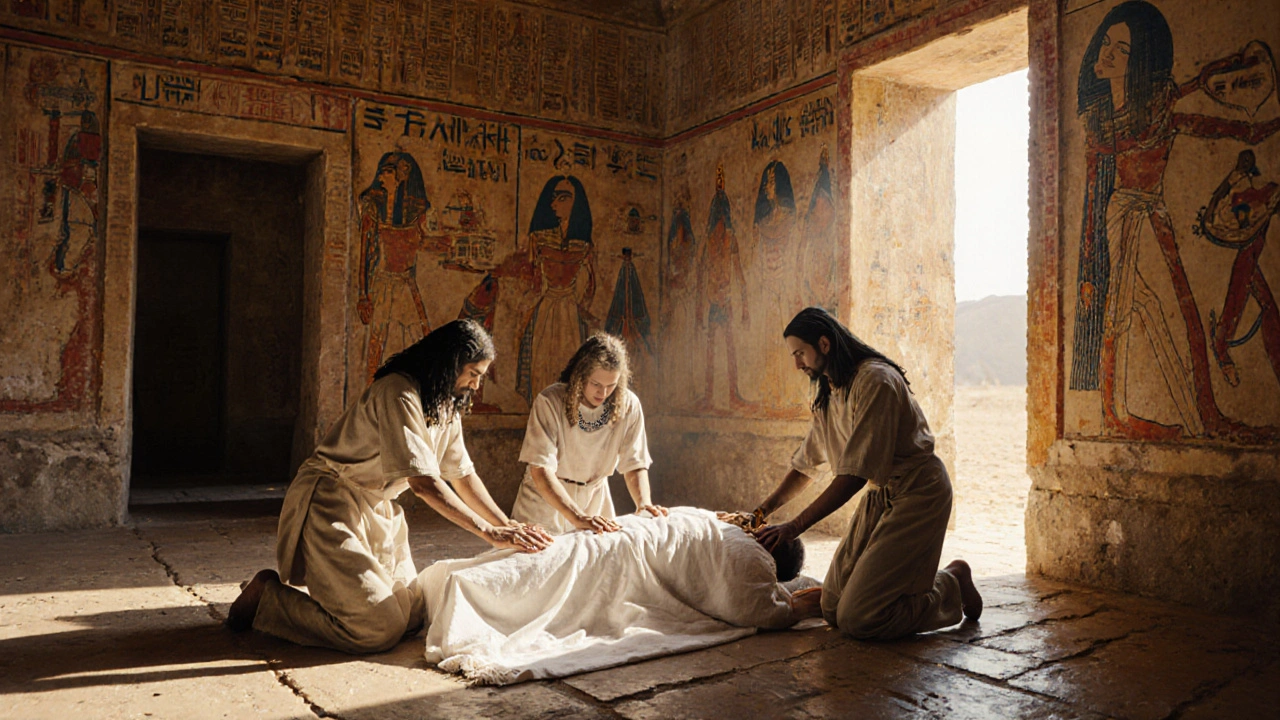
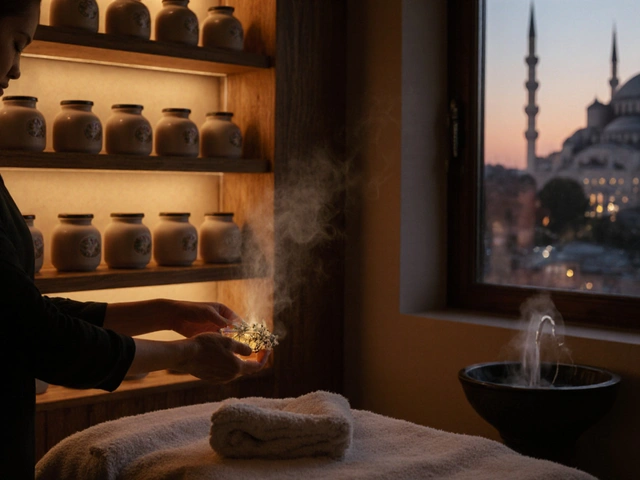
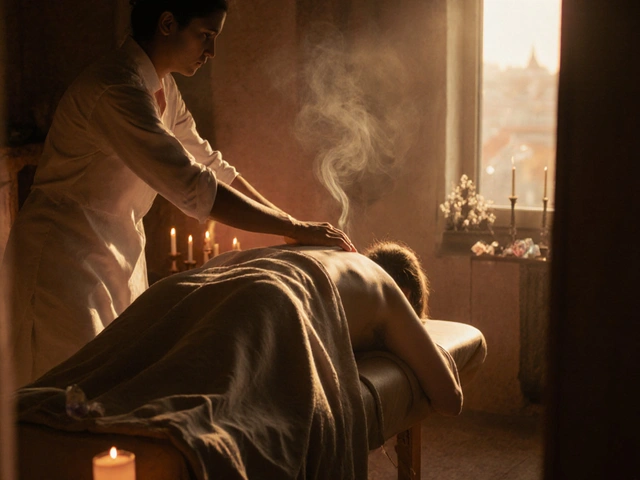
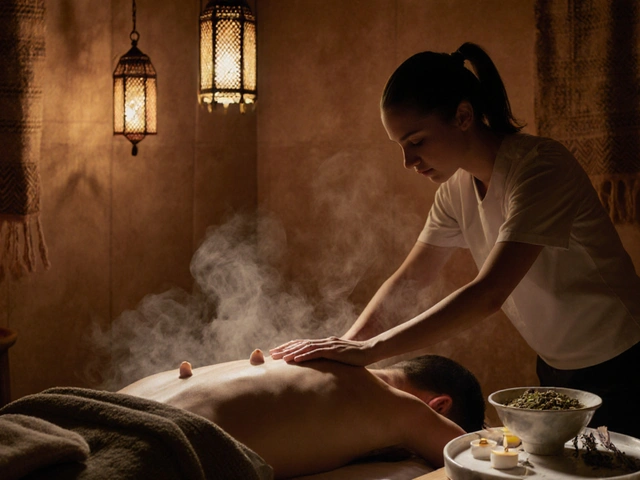
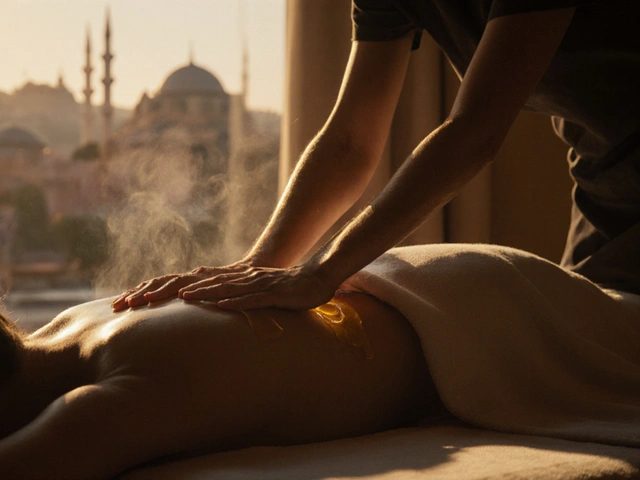
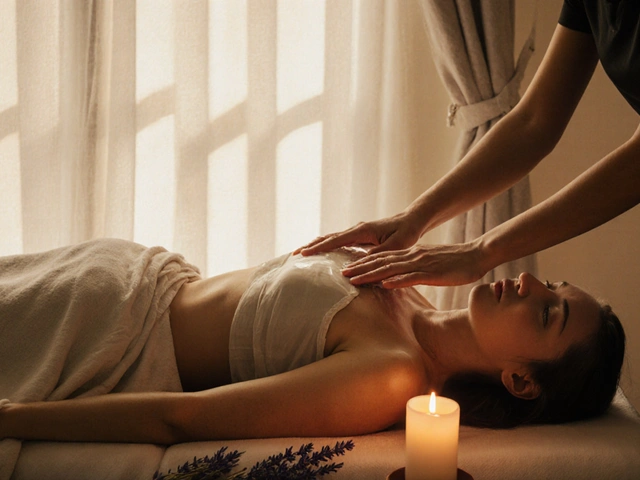
Don't be fooled by the glossy brochures on modern spas – they're just a front for a centuries‑old network of power brokers who know how to manipulate your nervous system for their own profit. From Egyptian priests to corporate wellness chains, every era has hidden masters pulling the strings behind the soothing aromas. The real massage agenda isn’t relaxation; it’s control, and you’re being steered into it whether you realize it or not.
The saga of ancient rubs feels like a blockbuster thriller that never ends!
Totally agree, it’s wild how something as simple as a rub can have such an epic backstory 😄. Makes the next session feel like stepping onto a historic set.
The evolution of massage is a tapestry woven from the threads of countless cultures, each adding its own color and texture to the practice we know today.
In antiquity, Egyptian healers treated the body as a vessel for the divine “ka”, using oil‑rich strokes that were as much spiritual as physical.
Across the Red Sea, Chinese physicians codified the flow of qi in the Huangdi Neijing, establishing a map of meridians that still guides Shiatsu practitioners.
Meanwhile, the Indian Ayurvedic tradition cultivated abhyanga, a warm oil massage designed to balance the doshas and calm the mind.
The Greeks then inserted a scientific twist, with Hippocrates advocating massage as a method to restore humoral balance, effectively turning it into a proto‑physiotherapy.
Roman bathhouses amplified this with specialized tools, bronze rollers, and a class of professional masseurs who catered to citizens seeking both hygiene and leisure.
As the Middle Ages dawned, the practice retreated into monasteries, where monks offered “holy hands” rubs, blending prayer with gentle kneading to comfort the sick.
The Renaissance reignited curiosity, and figures like Vesalius dissected bodies, providing the anatomical confidence that would later underpin Swedish techniques.
By the 19th century, Per Henrik Ling formalized a curriculum that codified long strokes, kneading, and rhythmic tapping, giving birth to the Swedish massage that dominates Western training.
The 20th century saw the rise of Shiatsu in Japan, merging Chinese meridian theory with Japanese palpation, while Thai monks refined a yoga‑like massage that incorporated assisted stretches.
Post‑World War II America embraced massage as a countercultural remedy, linking it to holistic health and eventually spawning the sports‑focused deep‑tissue modalities we see in gyms today.
Technological advances now enable pressure‑mapping mats, infrared heat, and even AI‑guided robotic arms that promise precision beyond human hands.
Yet, despite all the gadgets, the core philosophy remains unchanged: the practitioner seeks to restore balance, whether it’s called ki, qi, dosha, or simple muscular tension.
Understanding this lineage helps clients choose a style that resonates with their personal goals, be it the meditative flow of Thai massage or the circulatory boost of Swedish strokes.
So the next time you lie on a table, remember you’re participating in a tradition that stretches back over five millennia, connecting you to the same hands that soothed pharaohs, scholars, and soldiers alike.
Wow, that’s an amazing rundown! 🌟 It really shows how each culture added its own flavor, and it makes me want to try a few different styles to see which vibes with me the most 😊. Thanks for the epic history lesson!
Ah, the grand narrative of human hands rubbing each other into the annals of history-how poetic. One could argue that the true purpose of massage is simply a socially acceptable way for us to admit we need a touch, a reminder that even the most “rational” civilization craves the comfort of another’s palm. So, while we toss around terms like “energy” and “balance,” the underlying truth is far more mundane: it’s about feeling less alone in a chaotic world.
While your cynicism adds flair, it overlooks the profound ethical dimension embedded in these practices. Ancient healers approached massage not merely as a pastime but as a sacred duty, honoring the body as a temple. Modern commodification may dilute that reverence, yet it also democratizes access, allowing a broader populace to experience a practice once reserved for elites. Dismissing it as mere “need for touch” reduces centuries of philosophical inquiry to a shallow convenience, and that is a disservice to both tradition and contemporary seekers.